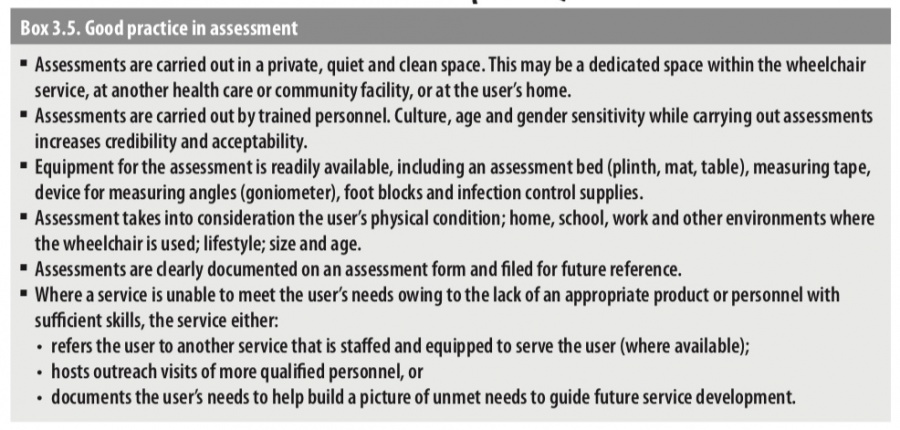Wheelchair Assessment
Original Editor - Your name will be added here if you created the original content for this page.
Top Contributors - Naomi O'Reilly, Simisola Ajeyalemi, Kim Jackson, Rucha Gadgil, Amrita Patro and Olajumoke Ogunleye
Introduction[edit | edit source]
Assessment is the second wheelchair service step. Information collected from the assessment will help the wheelchair service personnel and wheelchair user to; choose the most appropriate wheelchair from those available; determine the most appropriate wheelchair components from those available including any possible additional postural support required and decide what training or support the wheelchair user family member/caregiver may need to use and maintain their wheelchair. Assessments should always be carried out in a clean, quiet space, which may be a space within the wheelchair service, at another health care or community facility, or at the user’s home. If it is necessary to check whether a person has a pressure sore, do this in a private space. Respect the dignity and privacy of the wheelchair user irrespective of their age, gender, religion or socioeconomic status.
The wheelchair assessment process should incorporate the following two parts:
Good Practice[edit | edit source]
Resources[edit | edit source]
References[edit | edit source]
- ↑ William Armstrong, Johan Borg, Marc Krizack, Alida Lindsley, Kylie Mines, Jon Pearlman, Kim Reisinger, Sarah Sheldon. Guidelines on the Provision of Manual Wheelchairs in Less Resourced Settings. World Health Organization; Geneva: 2008.







